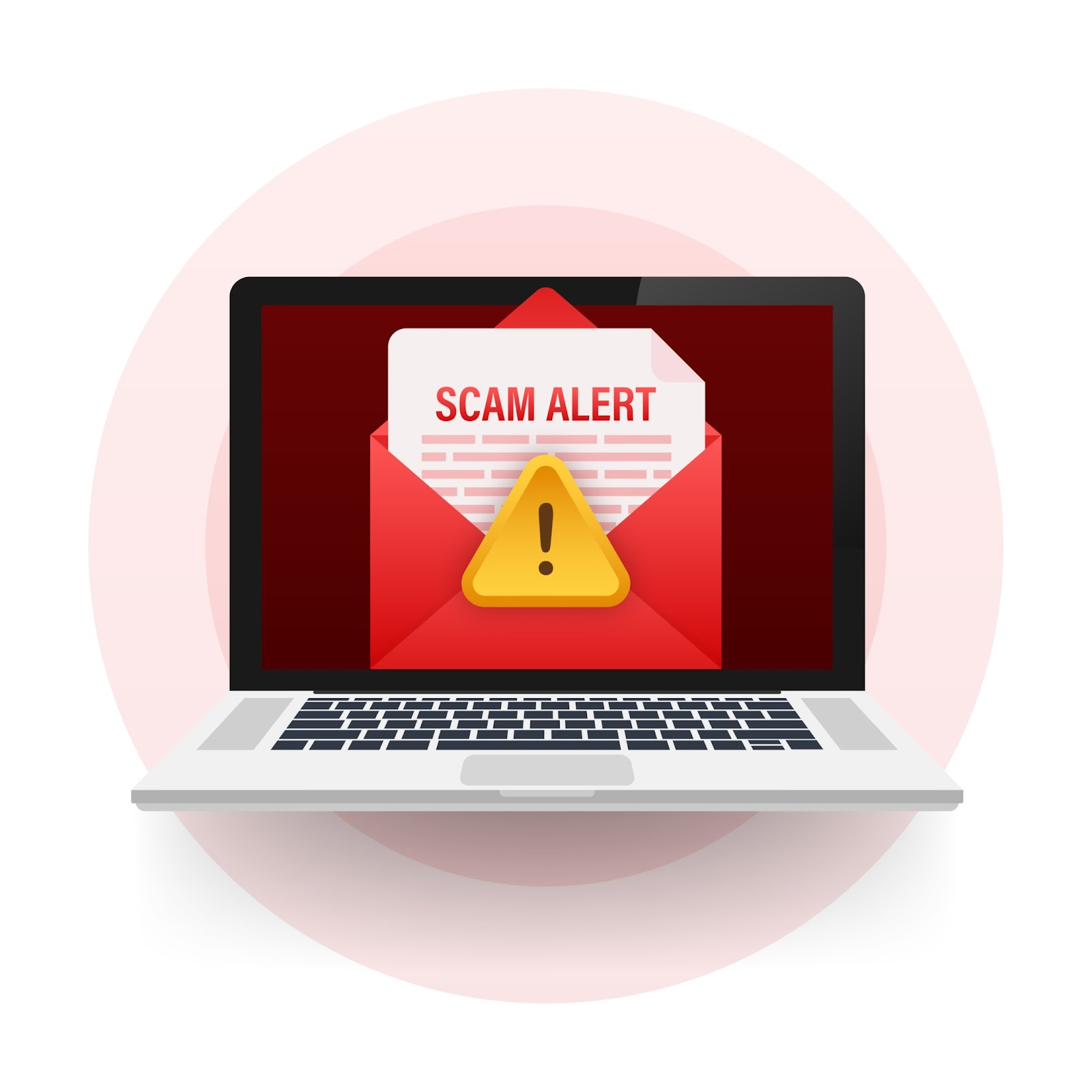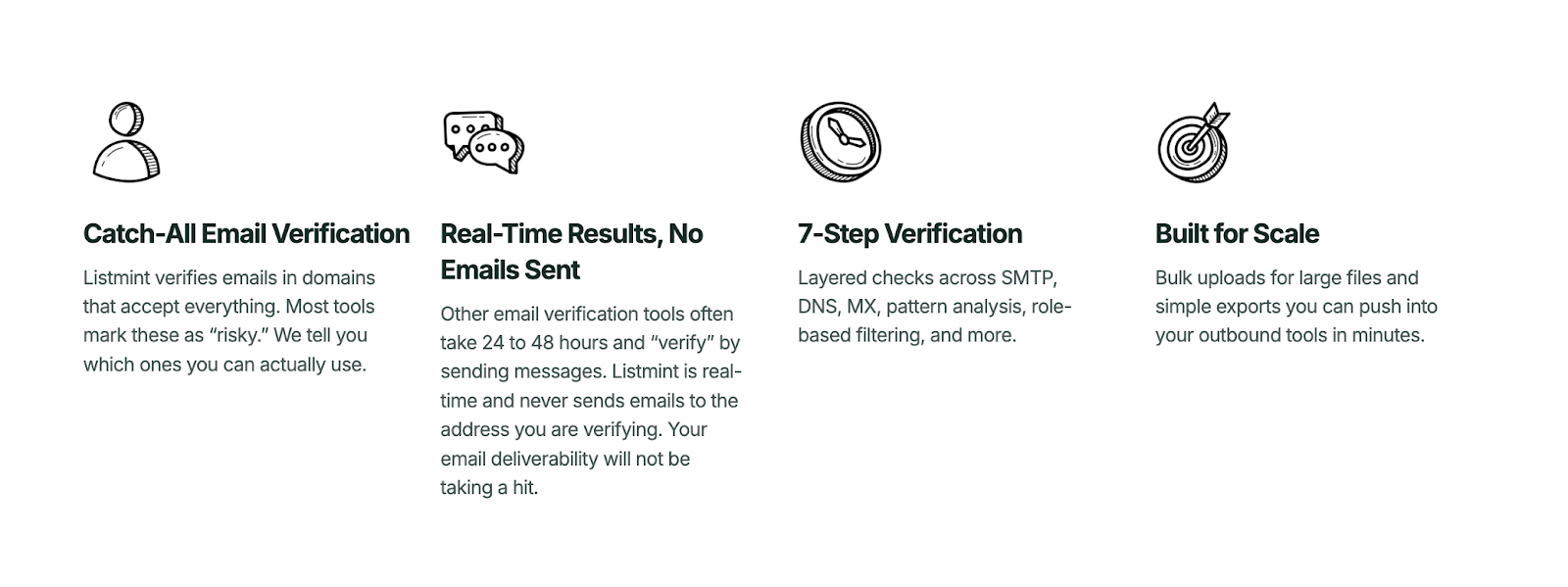
Every marketer wants their messages to land in the inbox, not vanish unnoticed. Yet there are hidden risks that can quietly undermine even the best campaigns.
These silent threats don’t bounce, don’t engage, and don’t belong to real people, but they can damage email deliverability and sender reputation in ways that are hard to reverse.
The challenge is that you’ll never see a published list of these risky addresses. They’re designed to stay invisible. What you can do, however, is learn the signs that point to their presence and take steps to keep them out of your subscriber list.
In this guide, we’ll explain what these traps are, the different types you should know, the risks they create, and the steps to spot and avoid them. We’ll also show how Listmint helps protect your data so you can focus on reaching real subscribers with confidence.
Internet service providers (ISPs) and anti-spam organizations create spam trap email addresses to catch spammers and identify senders with poor list practices.
They look like valid email addresses but belong to no real person. The purpose is to identify spammers, detect suspicious activity, and stop unwanted messages before they reach the inbox.
Legitimate senders never receive a direct spam trap alert. Instead, they notice signals such as lower inbox placement or sudden deliverability issues.
Mailbox providers use trap email addresses to separate engaged subscribers from lists filled with outdated emails or invalid addresses.
There are different types of spam traps, each highlighting a specific risk. Some reveal when email marketers collect contacts through scraping, while others expose lists that include abandoned email addresses or common typos.
Recognizing these patterns helps protect sender reputation and maintain a healthy contact list.
Spam traps exist in several forms, each designed to catch senders who neglect list quality. Some are email addresses created only to detect spammers, while others come from outdated or mistyped entries.
Knowing the types helps email marketers avoid them and keep a healthy contact list. They include:
Each of these spam trap email addresses poses unique risks. Recognizing them early is key to avoiding reputation loss and keeping email deliverability strong.
Hitting spam trap email addresses causes a serious decline in email deliverability, with more messages diverted to the spam folder.
Sender reputation suffers fast after sending to traps. Mailbox providers treat those hits as evidence of low list hygiene, and legitimate senders can be flagged the same way. Domain or IP addresses can be blocked.
Recovery requires patience and consistent effort that may take a few days or longer.
A single trap hit can trigger a chain reaction. Campaign performance drops. Open rates fall. Revenue falls. Engagement drops even for email addresses that are real and responsive.
Marketers carry risk in every send. Message content and frequency matter less if deliverability suffers. Maintaining a clean contact list protects communication with engaged subscribers and keeps delivery rates high.

Spam trap email addresses look like any other contact. They accept messages without bouncing and blend into a subscriber list. That makes them tricky to catch. Still, there are reliable ways to uncover them.
One effective method is tracking engagement. Since trap email addresses are not linked to a real person, they never open emails, click links, or respond.
If you notice addresses that stay completely inactive across multiple campaigns, they could be traps or disengaged subscribers that should be suppressed.
Here are more signs that help identify spam trap email addresses:
Common mistakes like test@gnail.com or user@yaho.com are strong indicators of typo spam traps.
These usually slip in when people mistype their email during signup. Spotting and correcting obvious errors reduces the chance of mailing invalid addresses.
Anti-spam organizations often plant examples like zzmoms@nobodyserve.ter or random strings of letters to catch senders with poor email hygiene. If an address looks irrelevant or machine-generated, remove it before sending.
Hard bounces usually signal invalid addresses rather than direct spam traps. However, frequent bounces can be a warning that a list contains hidden issues.
In some cases, a trap hit may return a list denied error or appear on a suppression list maintained by providers. Treat repeated bounces and warnings as signs to investigate and clean your data.
Recycled spam traps often come from email accounts that were once valid but have been inactive for months or years. If you see subscribers with no activity over long periods, they may have abandoned the account.
Regular email scrubbing helps remove these addresses before they get converted into traps.
Another sign of spam traps is an unexplained dip in inbox placement across campaigns. If you notice messages being diverted to the spam folder or a drop in open rates without changing your strategy, traps could be part of the issue.
Monitoring deliverability trends helps spot problems early.
Many blocklists track trap activity. If your sending domain or IP address suddenly appears on a blacklist, it may mean your campaigns are hitting traps. Use blacklist monitoring tools alongside email validation to stay ahead of these risks.
Using these techniques helps email marketers spot common spam traps early, maintain a healthy contact list, and keep emails out of the junk folder.
The safest way to protect sender reputation is to stop spam traps from entering your subscriber list in the first place. Careful acquisition and ongoing list maintenance make all the difference.
Here are proven steps that help email marketers avoid common spam traps:
Double opt-in adds a second layer of verification to sign-ups. After someone enters an email address, they must confirm it through a follow-up email before being added to your subscriber list.
This step prevents invalid email addresses and ensures that only real subscribers who want your messages get through.
Routine list cleaning removes inactive subscribers, outdated emails, and invalid addresses before they cause deliverability issues, and prompts you to delete risky contacts. Many teams set a schedule to clean their subscriber list quarterly or twice a year.
Using a tool like Listmint makes this process faster by flagging invalid email addresses and outdated emails at scale.
Email verification tools help detect invalid email addresses, common typos, and risky catch-all domains. Some tools scan email lists in bulk, while others work in real time at the point of entry.
Listmint provides both options to reduce hard bounces and protect sender reputation. Keep your lists safe and accurate with Listmint today.
Dividing subscribers into engaged and inactive groups lowers the chance of hitting recycled traps. Focus campaigns on engaged subscribers who open and click.
Keep inactive subscribers in a separate segment for re-engagement or eventual removal.
Spam trap addresses never act like a real person. They receive emails but show no opens, clicks, or replies.
Tracking activity makes it easier to identify trap email addresses or inactive contacts that weaken list health.
Purchase lists often contain pure spam traps or addresses pulled from public websites. Building lists through opt-in forms, quality content, and genuine interest reduces the chance of hitting traps.
Organic growth keeps communication limited to people who want your emails.
Keep a record of how each email address entered your database.
If deliverability drops or a spam trap is suspected, you can trace the issue back to a specific campaign, sign-up form, or file upload. That visibility makes future prevention easier.
Avoiding spam traps starts with data accuracy. If email addresses are invalid or filled with common typos, campaigns risk hitting traps that damage deliverability.
Listmint verifies each address in real time, catching mistakes at the source and keeping subscriber lists focused on real people.

Recycled spam traps often come from outdated emails left in databases for too long. With 1B+ emails verified, Listmint provides the tools to clean old data at scale.
Bulk cleanup identifies inactive subscribers, recycled traps, and invalid email addresses before they cause issues. That accuracy helps protect the sender's reputation and reduces wasted sends.
Most verification services stop at standard checks. Listmint goes further by verifying catch-all email addresses instantly.

Other tools can take 48 hours or longer, but Listmint’s email validation API and platform deliver real-time results without sending messages to inboxes. That means businesses recover over 50% more valid leads, turning risky data into safe opportunities.
Listmint helps email marketers avoid spam trap email addresses, protect campaigns from unnecessary bounces, and maintain a healthy contact list that reaches engaged subscribers.
With over 99% verification accuracy, Listmint gives teams the confidence to send emails that land where they belong.
Verify your list with Listmint today!

Spam trap email addresses are silent threats that block messages, reduce email deliverability, and weaken sender reputation. Even one trap can damage engagement and waste resources.
Staying safe requires more than good content. It depends on accurate data, strong validation, and regular maintenance of your subscriber list.
Listmint helps protect against the most common spam traps by verifying every email address in real time, validating catch-all domains instantly, and cleaning outdated emails that often turn into recycled traps.
With over a billion emails verified and 99% accuracy, Listmint gives marketers the confidence that campaigns connect with real subscribers instead of hidden traps.
A healthy contact list is the foundation of effective email marketing. With Listmint, you gain the tools to avoid spam traps, keep messages in the inbox, and safeguard long-term sender reputation.
Start protecting your campaigns with Listmint today. Get started for free!
Spammers often collect email addresses through scraped public websites, purchased lists, or fake sign-up forms. These methods are risky because not all spam traps are visible, and sending to them can damage a sender’s reputation.
You can spot suspicious addresses by looking for typos, invalid domains, or patterns that don’t resemble a real person. For example, test@gnail instead of gmail is a clear red flag. Regular validation helps identify these errors before they enter your subscriber list.
No, spam traps never behave like real users. They do not open messages, click links, or reply. While all traps harm deliverability, their impact is not created equal. A pristine trap is more damaging than a recycled one.
A spam trap can be an address repurposed after years of inactivity or one with a common typo, such as a misspelled Yahoo domain. To stay safe, marketers should avoid sending emails to inactive subscribers or unverified contacts.
Verify all your emails, even Catch-alls in real-time with our Email Verification Software.
Create an account for free.